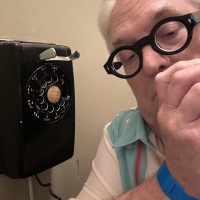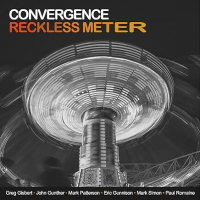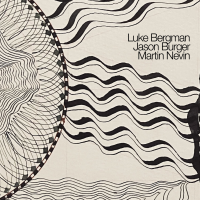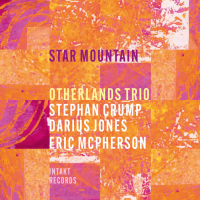Home » Jazz Articles » Multiple Reviews » Joel Dorn's Nine Lives: Label M and Live at the Left Bank
Joel Dorn's Nine Lives: Label M and Live at the Left Bank
It wasn't but a few years ago that veteran record producer Joel Dorn and a business partner founded 32 Records, a label devoted to re-releasing the old Muse and Landmark catalogs and releasing previously unheard live recordings by major jazz artists. Previous to that, Dorn had been the founder of Night records and a producer and A&R guy for Nesuhi Ertegun's Atlantic Records. He has won eight Grammy® Awards, most notably for producing Roberta Flack's "Killing Me Softly" and "The First Time Ever I Saw Her Face." In late 1999, Joel Dorn left 32 Records to head up his newest endeavor, Label M, a record label that is part of the larger multimedia company Paradise Music and Entertainment.
Label M has as it's core a collection of some 350 privately recorded live performances from the archives of Baltimore's Left Bank Jazz Society. These show were recorded, mostly on Sunday afternoons, between 1965 and 1980, capturing the cream of the jazz world performing at their peak, during a time when jazz as being supplanted by rock as the popular music. Dorn had been aware of these tapes since the mid-1980s, when he was at the helm of his self-started Night Records. At the time, he approached the society with the idea of releasing the music, but was spurned by the society who was unsure of the legal ramifications of releasing this music. After fifteen years of discussions, Dorn was able to secure a five-year exclusive deal where he had complete rights to release the Left Bank material. This gave rise to the formation of Label M Live, a series of Label M releases devoted to previously unreleased live recordings, both from the Left Bank Jazz Society Performances and elsewhere. To date, there have been five Live at the Left Bank releases. All of this music has been previously unheard by the general population, making them valuable additions to the discographies of the performing artists, many who have passed on.
 Stan Getz
Stan Getz My Foolish Heart, Live at the Left Bank
(Label M 5702)
This is perhaps the best of this glut of releases. Getz is in relaxed lyrical form as he breathlessly spins his way through ballads "My Foolish Heart" and "Spring is Here." Recorded in May 1975, Getz tapped the considerable rhythm section of Richie Beirach, Dave Holland, and Jack DeJohnette for this spirited, yet cool performance. To paraphrase past criticism, "When Stan Getz was in the zone, he was there all alone." Here, he is in the zone.
 Sonny Stitt
Sonny StittJust the Way it Was, Live at the Left Bank
(Label M, 5703)
A wonderful period piece as train wreck. The culture of the 1970s violently collides with Sonny Stitt's Be Bop heart. Stitt plays an electrified saxophone in a classic organ trio. Where the Getz disc was cool and relaxed, this recording is frenetically incandescent. Stitt's playing is precise and Bop-centered. When blown through the electric saxophone, songs like "Cry Me a River" and the "Shadow of Your Smile" sound like Tin Pan Alley from a '70s mystery film.
 Cedar Walton
Cedar WaltonThree Sundays in the Seventies, Live at the Left Bank
(Label M, 5711)
Urbane and studied, Cedar Walton leads a tenor, trumpet-fronted sextet, that has Etta Joness show up for upbeat, dirty performances of "Blow Top Blues" and "Don't Talk to Strangers." Walton allows all plenty of blowing room, particularly for bassists Sam Jones and Herbie Lewis. A most cool "Naima" opens the gig. These sides were gleaned from three performances in 1971 through 1974.
 Al Cohn & Zoot Sims
Al Cohn & Zoot SimsEasy as Pie, Live at the Left Bank
(Label M, 5716)
The listener bobs to the surface in the middle of "Tickle Toe." The effect is intoxicating. The song is appropriate. A vehicle for Lester Young, Prez's tradition had no greater advocates that Cohn and Sims, whose tone owes much to the great tenorist. The medley of "These Foolish Things / Willow Weep for Me" demonstrates the grasp of ballads and blues these two titans had. Recorded in October 1968, these performances capture these two big band types beginning their hard small group careers. The smoothest tones since Stan Getz—oops—Lester Young.
 Freddie Hubbard & Jimmy Heath
Freddie Hubbard & Jimmy HeathJam Gems, Live at the Left Bank
(Label M, 5716)
Jam, Jam, Jam. A nuclear blowing session with extended versions of "Bluesville," "Loverman," and a 17 minute "Autumn Leaves." This is a burning set propelled with over the top performances by Wilbur Little, Bertell Knox and Gus Simms. But the leaders are the story. Freddie Hubbard is in his prime and Jimmy Heath riding his wave. This might have been mainstream jazz's answer to the British Invasion.
 Ray Bryant
Ray Bryant Somewhere in France
(Label M, 5701)
Here is the exception. Somewhere in France was not recorded at Baltimore's Left Bank, it was recorded, well Somewhere in France. Derived from a $2.00 cassette tape recorded by a sound man "somewhere in France" this disc provides perhaps the best example of Ray Bryant live, including Joel Dorn's earlier Ray Bryant Live at Montreux. Beginning with "Take the 'A' Train," Bryant flexes his blues muscles on "Willow Weep for Me," "Slow Freight," and "St. Louis Blues," and sighs his divine ballad inspiration on "Django," "Good Morning Heartache," and "When I Look into Your Eyes." This is a disc to crow about, as are all of the releases on Label M.
Tags
PREVIOUS / NEXT
Support All About Jazz
 All About Jazz has been a pillar of jazz since 1995, championing it as an art form and, more importantly, supporting the musicians who make it. Our enduring commitment has made "AAJ" one of the most culturally important websites of its kind, read by hundreds of thousands of fans, musicians and industry figures every month.
All About Jazz has been a pillar of jazz since 1995, championing it as an art form and, more importantly, supporting the musicians who make it. Our enduring commitment has made "AAJ" one of the most culturally important websites of its kind, read by hundreds of thousands of fans, musicians and industry figures every month.




















